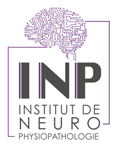Limbic Expression of mRNA Coding for Chemoreceptors in Human Brain—Lessons from Brain Atlases
Résumé
Animals strongly rely on chemical senses to uncover the outside world and adjust their behaviour. Chemical signals are perceived by facial sensitive chemosensors that can be clustered into three families, namely the gustatory (TASR), olfactory (OR, TAAR) and pheromonal (VNR, FPR) receptors. Over recent decades, chemoreceptors were identified in non-facial parts of the body, including the brain. In order to map chemoreceptors within the encephalon, we performed a study based on four brain atlases. The transcript expression of selected members of the three chemoreceptor families and their canonical partners was analysed in major areas of healthy and demented human brains. Genes encoding all studied chemoreceptors are transcribed in the central nervous system, particularly in the limbic system. RNA of their canonical transduction partners (G proteins, ion channels) are also observed in all studied brain areas, reinforcing the suggestion that cerebral chemoreceptors are functional. In addition, we noticed that: (i) bitterness-associated receptors display an enriched expression, (ii) the brain is equipped to sense trace amines and pheromonal cues and (iii) chemoreceptor RNA expression varies with age, but not dementia or brain trauma. Extensive studies are now required to further understand how the brain makes sense of endogenous chemicals.
| Origine | Fichiers éditeurs autorisés sur une archive ouverte |
|---|---|
| licence |


